
With the catastrophic elimination of Reno-Stead Airport as a racing venue this coming September, pylon air racing must once again reinvent itself.
This won’t be easy, of course. After 59 years in the same place, the seismic changes coming to air racing are unnerving to its deeply faithful fans and participants. While a shock to those of us used to Reno as the end-all, this change is nothing new as closed-circuit air racing has always evolved, from the nascent chaos of the giant pre-WW-l air meets to the inter-war years golden age and then post-war Cleveland Nationals, followed by the now-ending Reno era.
To understand where air racing is going, it’s best to understand what made the Reno era possible. In a nutshell, WW-ll. The Pax Americana blossoming in the later 1950s and into the ’60s left an immense reserve of surplus aircraft and airports, along with a vibrant middle class and, in the Western U.S., plenty of elbow room. Additionally, the greatest generation came of age with minimal regulation, was risk tolerant and generally well-adjusted to the reality of their mortality, with so many of them having been personally involved in such things as the Great Depression, WW-II and the Korean War. People were largely interested in mechanical tinkering and contesting their handiwork against others, too.
All of that has changed. The glut of big-cubic-inch prop jobs has been consumed and is now found in museums or turned into prissy investment portfolio fodder. The old airports have rotted away or were transformed into industrial parks, plowed under for housing or updated for busy cargo and passenger use. The Western U.S. is far more crowded and under pressure from all quadrants as the ranchers, farmers, land developers, industry, military, preservationists and so on all want in. The middle-class disposable income has been siphoned off, society is insulated and risk averse and mechanics has largely been supplanted by electronics. A V-12 and 120 inches of manifold pressure just aren’t what they used to be. Sigh.
But racing will never die because it’s an outlet for mankind’s inherent need to engineer and test new limits. And as the air racing community contemplates the calendar, Sport class air racing (the Reno Sport class) easily offers the most forward-thinking, best-prepared path to success. And that’s not to mention the fastest, most spectacular, relevant aircraft built today. Thankfully, concerned about Reno’s future, two years ago Sport class leaders quietly began mapping their future.
We’ll pause here long enough to explain that the various classes at Reno—Formula One, Biplane, Sport, T-6, Jet and Unlimited—have been self-governing at the nuts-and-bolts level, lately with the FAA looking over their shoulder. They write their own class technical and conduct rules, then gather under the Reno Air Racing Association banner as RARA supplies the overall event sanctioning and marketing functions and, not least, the venue.
Thus the formation of the 501(c)(3) Sport Air Racing Council by the existing Sport class racers last year. SARC’s immediate goal is gaining FAA accreditation as an air race organization, a task they should complete this calendar year. Sport class air racing will remain an accredited air race class and will train and provide the racers to SARC-organized events. This means SARC (ah, a new acronym) could approach a promoter putting on an airshow and say, “Hey, plug us into your show. We’re FAA approved, just like your aerobatic and military performers.” And just like that, there could be multiple Sport class air races across the U.S. and Canada (SARC is also working with Transport Canada).
Which brings up an important point. The Sport Air Racing Council would love to have multiple races and a racing series culminating with a championship, but they do not want to start an all-new multi-class air racing venue on their own. They absolutely want to fit into already existing airshows, plus fully support whatever big national races RARA can erect post-Reno.
Expect the same aircraft technical specifications from SARC—at heart a 1000-cubic-inch engine displacement limit, plus any power adder. That’s great, as the existing Sport class rules already provide exciting racing and offer generous room for growth.
Change in the Air?
One modification could be a proliferation of subclasses or formats under the overall Sport banner. At Reno each class is run in Gold, Silver and Bronze races based on qualifying speeds, and if there are enough participants, sometimes a Medallion race below Bronze. For Sport this typically means stock 180-hp RV-4 to RV-8 types in Medallion, moderately modified RVs and Harmon Rockets and such in Bronze, mostly retractable composite variants in Silver and the whole lot headlined by the all-out 900-hp turbocharged Glasairs and Lancairs in Gold. With SARC desirous of a farm-team ladder where aspiring pilots could start in less-demanding classes and work their way up, we could see both the typical six- to eight-ship closed-course races and perhaps simpler two-ship side-by-side contests that would be simple drag races through pylons with a wingover to turn around and race back to the start-finish line. We wouldn’t be surprised to also see yet-to-be-defined racing formats and perhaps aircraft specifications to support pilot growth. Even so, right now SARC offers an entry level to serious competition in an easy-to-understand, four-tier format.
A big reason why Sport is ahead of the other Reno classes in starting new racing is their emphasis on pilot qualifications and safety. They see formation flying as the fundamental skill supporting pylon racing and have been incorporating such skills and schooling for some time. Air racing is an inherently dangerous activity (just like flying in general) and Sport’s attention to risk management is a good thing before turning someone loose at 400 mph in front of a crowd. Given today’s risk aversion, it’s necessary to the FAA. Interestingly, SARC reports their slower classes are very insurable, while the fast movers in Gold are more challenging, but doable.
Location, Location, Location
Of course, the largest impediment to air racing is a place to do it. Reno was ideal before housing and industry moved nearby. That is, it offered a near federal wilderness area on one side of a large three-runway airport with 1000 hotel rooms on the other side. SARC has been looking for new venues with existing airshows for about a year now and is currently in negotiations with five of them. Their criteria is a workable amount of safe terrain near a large metropolitan center, and while that is a tough order today, an additional go-to solution may be to race over water. That opens many major cities to consideration.
To define workable terrain, the 400-mph Gold racers are best run on an 8-mile-long oval to keep loads in the turns around 3 G’s, but different course configurations make the G-loading something of a variable. Sport rules have pilots demonstrating up to 4.5 G’s prior to or early in the race week to acclimate to racing loads and the occasional 3+ G turn in a course sounds acceptable. In any case G-induced loss of consciousness (G-LOC) is rightfully on the FAA’s racing radar, so there will be additional focus in this area and there might be additional equipment requirements, such as 100% oxygen in the Gold cockpits, too.
Personally, I enjoy fast airplanes on courses with long straights, even if that means the competition gets hard to see at the other end (typical in many motorsports). Letting the airplanes level out, unload the wings and accelerate, then turn and repeat another meaningful straight better shows both the airplane’s speed and cornering ability. But that’s just me.
Another possibility I’m anticipating is more racing—even three events per year would be a big improvement. More racing means more eyeballs on interesting airplanes, of course, but it also means better race craft for the pilots and faster development of the airplanes. The worry is the associated budget squeeze and burnout factor of frequent racing, but the market will soon give an answer on that.
Another immense potential is the integration of video, both live and for post-race viewing. Cameras in the cockpit, on the wingtips, in the tail and on the pylons mixed with informed commentary and behind-the-scenes pit work could give air racing a much-needed intimacy. Above all, intelligent marketing and personalizing the pilots and crew chiefs is needed to draw and hold a general audience. Video can also mean remote pylon judging, further reducing those at risk on the ground.
In short, air racing, and SARC in particular, have a big job in front of them, but also potential. The Biplane and Formula One classes will be looking for places to race, too, and there’s no reason they couldn’t follow Sport’s lead with FAA accreditation. Given their more intimate, internationally sanctioned 3-km course and recent overseas experience in F1’s case, they should have an easier time fitting in the greater airshow world. And we can always hope for that one big, all-racing meet as we’ve enjoyed at Reno. Want to help? Come to Reno this September for what promises to be the blowout send-off and show appreciation for the sport in person. I’ll see you there.


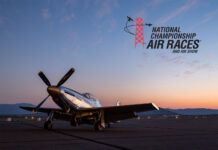
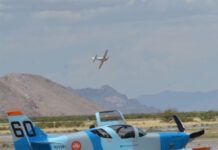
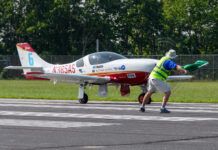
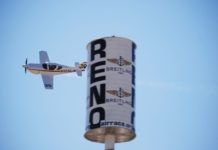
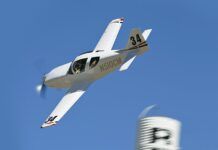
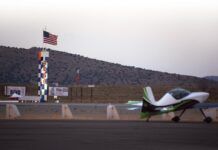
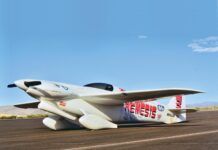
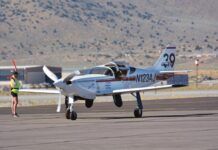
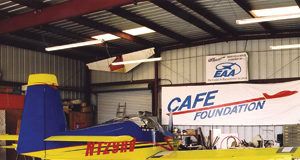
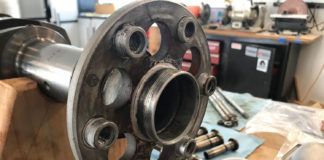

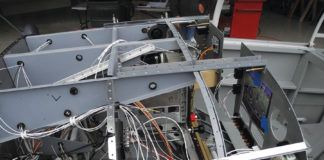
I’d like to put in a shoutout to Bob Mills for how much legwork he has been doing to keep Sport Class together and focused on the future.
Yes things have changed.
All of the hot rodders are getting old ,or have passed.
These people made the air races what they are today.
They spent huge amounts of there own money because they love to race .
The RARA never made the winning purse worth what these gentlemen spent to go race they aircraft.
This is part of the reason the ones that are still left ,and I mean the hot rodders will not spend the money to race their aircraft.
It has simply got too expensive for them too .
If the Reno air race association would’ve stepped up, and made it worth your while, there would be more of them still doing it..
And as far as Reno stead airport, the first time I went there and 67 it was out in the boondocks.
Then slowly the developers start buying property and getting closer and closer until the property becomes so valuable. It’s worth more money to develop than it is for an air race once a year..
Yes it’s sad it’s ending , but at least I was fortunate enough to see the best of it from the 60s on.